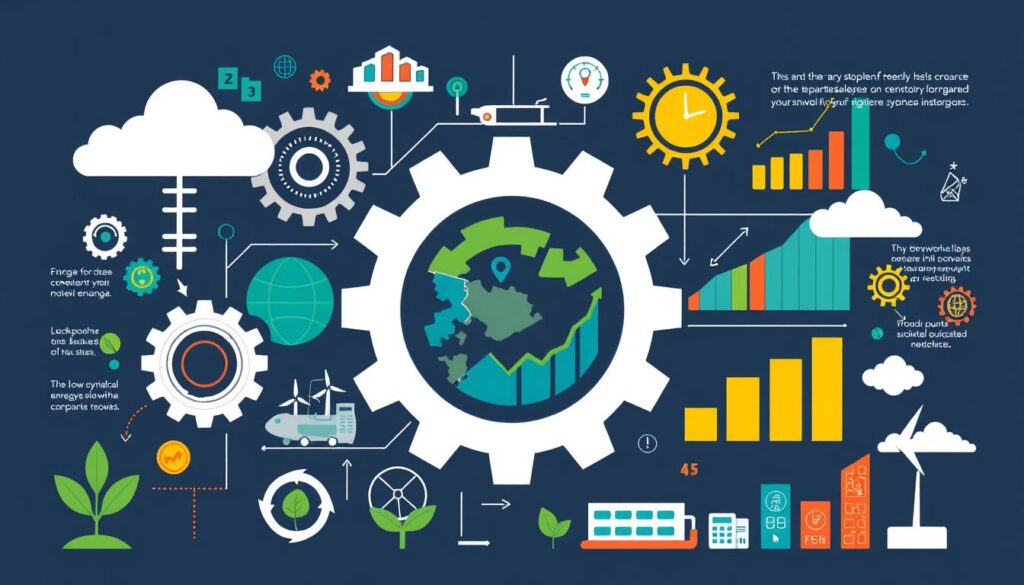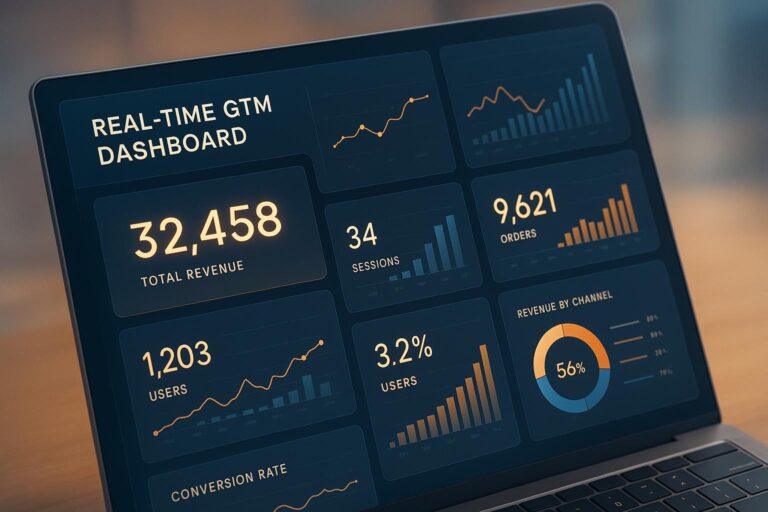In the world of business, using resources well is key to success. Efficient resource allocation is important for beating the competition. By focusing on maximizing resource efficiency, businesses can turn everything they have into opportunities for top performance. Those who excel in enhanced resource management can move quickly in competitive markets. This leads to better results and long-term growth.
Smart use of resources means projects get done on time and save money, leading to cost-effective work without sacrificing quality. Knowing how to use your resources well prevents money loss and strengthens your spot in the market. It all comes down to managing resources the right way to avoid using too little or too much. This creates efficient workflows that boost project success and overall productivity.
Key Takeaways
- Poor resource utilization can precipitate inefficiency and result in revenue loss.
- Timely and cost-effective project completions hinge on efficient resource utilization practices.
- Understanding your resource utilization ratio is vital to correcting utilization imbalances.
- Increased operational efficiency is a direct outcome of effective resource management.
- Dynamic resource allocation significantly influences project timelines for the better.
- Cost reductions and amplified productivity are achievable through optimal resource utilization.
- Project managers gain critical support in planning and execution through efficient resource allocation.
Understanding Resource Utilization
In the modern business world, knowing how to use resources best is crucial. This knowledge leads to better efficiency and more output. Let’s explore how focusing on using resources wisely can help a business.
Definition of Resource Utilization
Resource utilization is about how well a business uses what it has to reach its goals, avoiding waste. It is often measured by specific formulas, such as the Full-Time Equivalent (FTE) or utilization rate. The basic idea is, Utilization rate = Total Billable Hours / Total Available Hours, showing how efficiently resources are used.
Importance in Business Operations
Managing resources well is key to getting more done and spending less. Modern tools like Tempus Resource help businesses see how they’re doing, try out different scenarios, and change plans as needed. Using these tools helps businesses grow by making smart, proactive decisions.
Key Metrics for Measurement
Knowing how to measure resource use is important. Metrics like the Capacity Utilization Rate and the Ideal Utilization Rate help. They show clearly how resources are being used compared to what’s possible. Let’s look at these metrics more closely:
| Metric | Formula | Description |
|---|---|---|
| Utilization Rate | Total Billable Hours / Total Available Hours | Shows how much resources are used compared to what’s available. |
| Capacity Utilization Rate | Total of all employees’ utilization rates / Total number of employees | Shows how effectively resources are used throughout the business. |
| Ideal Utilization Rate | (Resource costs + Overhead costs + Profit margin) / Total available hours * Ideal billable rate | Aims to balance cost and resource use for profit. |
Keeping an optimal utilization rate around 80% helps balance resource use and employee well-being. Using these metrics and advanced software helps in making better decisions and allocating resources well. This leads to success for the organization.
Identifying Resource Wastage
In the competitive world of business, spotting where resources go to waste is key. Achieving greatness and being sustainable require it. Companies need to find and fix inefficiencies and unnecessary costs in their operations. This starts with spotting common issues.
Common Areas of Waste
Waste looks different depending on the industry. In manufacturing, big problems include making too much, having too much stock, errors, and using too much energy. Making more than needed can trap money in products that don’t sell. This raises storage costs and might make products outdated. Errors and doing things over waste resources, affecting what else could be done with them.
Impact on Productivity
Wasting resources harms productivity and profits. Bad resource management increases downtime, raises labor costs, and delays projects. This hurts the bottom line. For instance, waiting and unnecessary movements make workers less efficient. This delays tasks, raises costs, and makes the organization less adaptable.
Strategies for Waste Reduction
Businesses should use various strategies to use resources better and waste less. Principles of lean manufacturing like JIT and Kaizen can prevent making too much and errors. Lean methods also help find inefficiencies and smooth out operations.
| Principle | Description | Impact |
|---|---|---|
| Just-in-Time (JIT) | Reduces inventory waste by producing only what is needed, when it is needed. | Decreases storage costs and improves cash flow |
| Value Stream Mapping (VSM) | Visual tool to identify all critical steps in a production process and eliminate non-value-adding activities. | Enhances productivity by optimizing workflow |
| Continuous Improvement (Kaizen) | Focuses on incremental improvements in every aspect of the process, involving all employees. | Bolsters competitiveness and allows sustainable development |
Advanced tools for managing resources are another good move. These tools track how resources are used, showing where to make adjustments. They highlight where changes can have a big impact. Also, using sustainable practices attracts customers who prefer green products. This improves a brand’s image and keeps customers loyal.
To wrap up, tackling common waste areas and using smart reduction strategies boosts efficiency and sustainability. Mixing technology with lean practices optimizes how resources are used. It encourages ongoing improvement and a commitment to sustainability.
Techniques to Optimize Resource Utilization
Effective resource utilization boosts operational efficiency and sustainable growth. By using advanced technologies, businesses can implement resource optimization strategies. These strategies give them a competitive edge. We will look at some successful approaches used in different industries.
Leveraging Technology
Technology improves resource management and reduces waste. Software like ProjectManager streamlines resource management. It also boosts team productivity with real-time data. By using advanced resource optimization solutions, companies can track resource use better. This leads to more efficient resource allocation.
Implementing Process Improvements
Optimizing operational processes helps use resources better. Techniques like resource leveling and smoothing let managers use resources effectively. This reduces downtime and improves service. These practices save costs by balancing workloads and finding underused resources.
Adopting Agile Methodologies
Agile methodologies offer a flexible way to manage projects and resources. Agile promotes teamwork, continuous improvement, and quick adaptation to changes. Its focus on efficient resource allocation allows teams to adapt fast. Teams can thus optimize resource use based on project needs.
In conclusion, there are many ways to improve productivity and reduce costs through resource optimization strategies. Whether it’s through technology, improving processes, or agile management, the aim is the same. The goal is to make the best use of resources while achieving organizational objectives.
The Role of Data Analytics
In our world, businesses rely heavily on data analytics. It’s key for crafting resource optimization strategies. Through careful study of how things are used and predictive analytics, companies can get better at what they do and make smarter choices.
Analyzing Resource Allocation
Knowing how to use what you have starts with seeing how things are used now. Take healthcare, for example. Here, data analytics helps manage beds, staff, and gear. This makes sure everything is used well. By looking into the data, we can see what’s not working and find ways to do better, all to make the most of what we have.

Predictive Analytics for Efficiency
Predictive modeling tells us what we might need in the future by looking at past data. It’s super helpful for companies to get ready for changes and upcoming issues. With these insights, they can prepare for possible shortages and make their operations smoother, beating the competition.
Tools for Data-Driven Decisions
Advanced analytics tools help companies make smart choices. These tools keep an eye on things and adjust plans when needed, using up-to-date information. For instance, in managing supply chains, insights from data help monitor stock, demand, and how to move things around efficiently. This helps use resources well and cut down on costs.
Data analytics is crucial not just at the start but all through the process of using resources. With advanced data analytics, companies can be sure they use their resources in the most effective and flexible way, ready for whatever the business world throws at them.
Implementing Change Management
To make big changes, it’s key to manage resources optimally. This means planning carefully to keep things running smoothly and keeping everyone on board. Getting change management right is crucial to making the most of resource optimization solutions in your work processes.
Strategies for Effective Transition
To transition well, you need a solid plan. This includes scheduling and using good resource management methods right away. It helps avoid downtime and keeps things moving without interruption.
Identifying risks, assessing their impacts, and setting clear goals are key steps. These SMART goals guide the way to smooth transitions.
Ensuring Stakeholder Buy-In
It’s critical to get everyone on board with changes. Clear communication is the cornerstone, offering transparency and educating on the benefits. Highlighting better use of resources and clear improvements can win support and make integrating changes easier.
Monitoring and Adjusting
Once changes are in place, watch how they perform and adjust as needed. Using feedback and evaluations helps in tuning resource use. It’s also about handling unexpected issues, like people resisting changes or tech problems, to meet your goals.
| Benefit | Strategy | Outcome |
|---|---|---|
| Enhanced Productivity | Regular evaluations and updates | Refined workflows and reduced mundane tasks |
| Stakeholder Satisfaction | Proactive communication | Increased acceptance and support for changes |
| Compliance and Risk Mitigation | Thorough planning and documentation | Alignment with regulations, minimized legal risks |
| Operational Continuity | Minimizing disruptions | Smooth day-to-day operations |
With a strong approach to change management, companies can maintain efficiency and push for ongoing improvement and innovation.
Case Studies of Successful Optimization
We look at the real benefits of resource optimization strategies through actual examples. These stories show the impact of efficient resource allocation and improved resource management in big companies.
Examples from Leading Organizations
- Toyota introduced its famous Lean Manufacturing System to use resources better. This reduced waste and made production more efficient.
- Tesla made its Model 3 manufacturing better. In 2018, this car was the top-selling luxury electric vehicle. This was key to staying cost-effective and meeting customer needs.
- IBM greatly reduced the time to issue credits from a week to just 90 minutes. This shows significant process advancements.
- Uber improved how it serves customers by looking at its trip and supply data. This led to smarter use of resources and better service.
- Accenture helped the state of Washington overhaul its admin processes. They made finance, buying, and HR tasks run smoother.
Lessons Learned

These stories prove that getting better at managing resources can bring big benefits. The work by Toyota and Tesla shows how solving problems effectively and managing resources well can make a big difference.
Key Takeaways for Implementation
Using resource optimization strategies made for specific business needs can lead to real wins. These methods work well in many areas, like manufacturing, IT, and healthcare.
| Strategy | Detail |
|---|---|
| Optimized Meetings | Reduces time waste and increases focus on value-adding activities (as practiced by Elon Musk at Tesla). |
| Lean Manufacturing | Minimizes production waste while maximizing productivity (Toyota’s implementation). |
| Process-streamlined Credit Systems | Fast-track processing that significantly cuts down operation time (IBM’s methodology). |
Future Trends in Resource Utilization
Industries are always changing, and the need to use resources wisely is more important than ever. New trends in how we use resources are shaped by tech advances. This includes a big focus on artificial intelligence (AI) and machine learning (ML). These technologies are changing how we manage resources. They help us use resources in smarter ways that are good for both the economy and the environment.
Emerging Technologies
AI and ML are leading the way in making things more automatic. They’re changing how we optimize resources in big ways. By using these technologies, organizations can do routine tasks easily, analyze complex data for insights, and predict future needs. This helps plan ahead, which improves how well everything runs.
Using data analytics, companies can look at how they use resources and find ways to do it better. This leads to doing things more efficiently and saving money. These advancements make companies more streamlined and cost-effective.
Sustainability Considerations
Nowadays, more people are thinking about keeping things sustainable in how we manage resources. It’s about being efficient but also taking care of our planet. Ways to save energy include using fewer servers and keeping equipment running well. The aim is to do well in business by using resources wisely and with care for the environment.
The Shift Toward Automation
Automating with AI and ML also makes managing resources smoother. Check out how at this link. It allows for a smarter split of work and makes adjusting to changes easier. This helps stop workers from getting too stressed from too much work or unfair task sharing. We’re moving towards a system where technology helps us work smarter. This means being more efficient and environmentally friendly.
FAQ
What is Resource Utilization?
Resource utilization means using everything a company has wisely. This includes time, people, technology, and money, to reduce waste and increase what’s produced. It’s key for a company to work well and do better in business.
Why is Efficient Resource Allocation Important in Business Operations?
Allocating resources well is crucial. It helps businesses react quickly to market changes, manage resources better, and get more done with what they have. This way, projects finish on time and within budget, helping the business grow and stay ahead.
What are the Key Metrics for Measurement in Resource Utilization?
Important metrics are resource utilization ratios and efficiency measures. They show if resources are used too much or too little and help make work more streamlined. This cuts down on delays and boosts productivity, aiding in the company’s growth.
What are Common Areas of Waste in Resource Management?
Waste often comes from not using staff right, using too much material, and having machines sit idle. These issues can lead to losing money and lower productivity, hurting the company’s profits.
What Impact Does Resource Wastage Have on Productivity?
Wasting resources means the company isn’t working as efficiently as it could. This slows down how much they make, raises costs, and stops the company from reaching its goals and serving customers well.
What Strategies Can Reduce Resource Wastage?
To cut down on waste, companies can predict their needs better, share work evenly, and handle risks or changes well. These steps help use resources best and keep the company running smoothly.
How Can Leveraging Technology Optimize Resource Utilization?
Using advanced technology makes work flow better, automates repeat jobs, and gives better data for making decisions. This stops resources from being spread too thin and gives service workers the tools they need for great service.
What Process Improvements Can Be Implemented to Enhance Resource Utilization?
Improving processes could mean updating current ways of doing things, removing steps that aren’t needed, and using the best methods available. This makes work go faster and uses fewer resources, lining up with goals for smart and efficient use of resources.
Why is Data Analytics Integral to Resource Optimization?
Data analytics is key because it shows how resources are being used and finds patterns in performance. Using data to predict and make better decisions can improve how resources are used and get the most out of them.
What are the Common Strategies for Effective Change Management?
Effective change strategies involve clear communication, showing the benefits of change, and regularly checking and adjusting how resources are used. This ensures resources meet the changing needs of the company well.
Can You Provide Examples from Leading Organizations That Have Successfully Optimized Resources?
Top companies are often highlighted in case studies for their smart use of resources. These stories share their success tips, show how good resource management helps a lot, and give ideas that other companies can use.
How Will Emerging Technologies Affect Future Resource Utilization?
New technologies will majorly change how resources are used by making automation, productivity, and efficiency better and reducing waste. These changes will help companies keep growing in the long run and use resources in a way that’s good for the planet.
What Role Does Sustainability Play in Resource Utilization?
Sustainability is getting more important as companies aim to lessen their impact on the environment. Using resources in a way that’s good for the earth, cuts down on waste, and saves money matches what customers want and is good for the world.
How is the Shift Toward Automation Expected to Enhance Resource Utilization?
Moving towards more automation is expected to make better use of resources by needing less manual work, being more accurate, and freeing up people for more important tasks. This boosts efficiency and keeps companies competitive in their markets.



